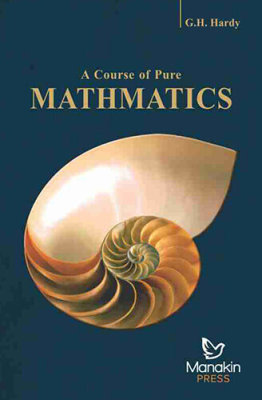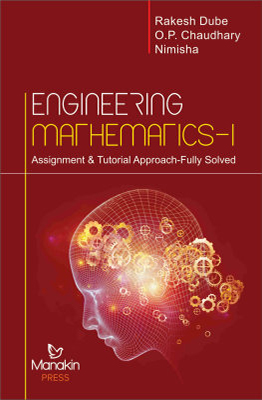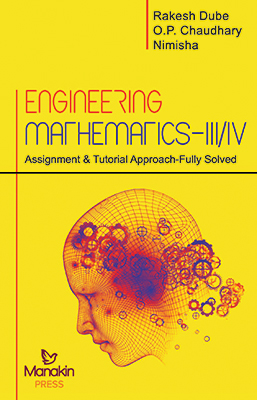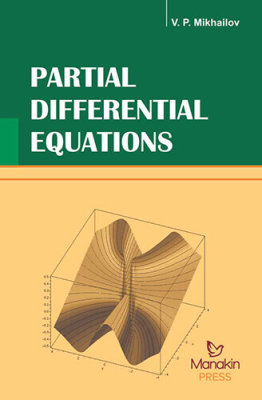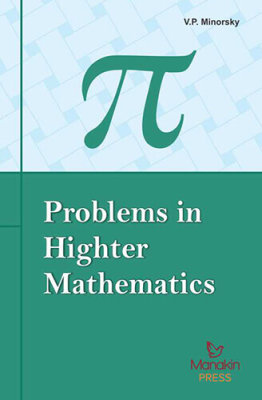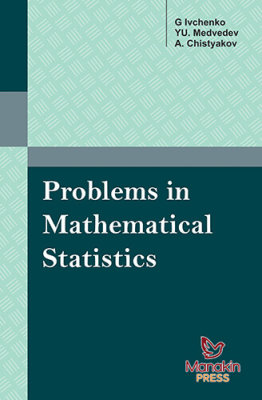Florian Cajori | Category: MathematicsBook DetailsISBN: 9789386677174
YOP: 2018
Pages: 556Order also on
In one concise volume, this unique book presents an interesting and reliable account of mathematics history for those who cannot devote themselves to an intensive study. The book is a must for personal and departmental libraries alike. Cajori has mastered the art of incorporating an enormous amount of specific detail into a smooth-flowing narrative. The Index – for example – contains not just the 300 to 400 names one would expect to find, but over 1,600. And, for example, one will not only find John Pell, but will learn who he was and some specifics of what he did (and that the Pell equation was named erroneously after him).In addition, one will come across Anna J. Pell and learn of her work on biorthogonal systems; one will find not only H. Lebesgue but the not unimportant (even if not major) V.A. Lebesgue. Of the Bernoullis one will find not three or four but all eight. One will find R. Sturm as well as C. Sturm; M. Ricci as well as G. Ricci; V. Riccati as well as J.F. Riccati; Wolfgang Bolyai as well as J. Bolyai; the mathematician Martin Ohm as well as the physicist G.S. Ohm; M. Riesz as well as F. Riesz; H.G. Grassmann as well as H. Grassmann; H.P. Babbage who continued the work of his father C. Babbage; R. Fuchs as well as the more famous L. Fuchs; A. Quetelet as well as L.A.J. Quetelet; P.M. Hahn and Hans Hahn; E. Blaschke and W. Blaschke; J. Picard as well as the more famous C.E. Picard; B. Pascal (of course) and also Ernesto Pascal and Etienne Pascal; and, the historically important V.J. Bouniakovski and W.A. Steklov, seldom mentioned at the time outside the Soviet literature.
INTRODUCTION
1. ANTIQUITY
2. The Babylonians
3. The Egyptians
4. The Greeks
5. Greek Geometry
6. The Ionic School
7. The School of Pythagoras
8. The Sophist School
9. The Platonic School
10. The First Alexandrian School
11. The Second Alexandrian School
12. Greek Arithmetic
13. The Romans
14. MIDDLE AGES
15. The Hindoos
16. The Arabs
17. Europe During the Middle Ages
18. Introduction of Roman Mathematics
19. Translation of Arabic Manuscripts
20. The First Awakening and its Sequel
21. MODERN EUROPE
22. The Renaissance
23. Vieta to Descartes
24. Descartes to Newton
25. Newton to Euler
26. Euler, Lagrange, and Laplace
27. The Origin of Modern Geometry
28. RECENT TIMES
29. Synthetic Geometry
30. Analytic Geometry
31. Algebra
32. Analysis
33. Theory of Functions
34. Theory of Numbers
35. Applied Mathematics
In one concise volume, this unique book presents an interesting and reliable account of mathematics history for those who cannot devote themselves to an intensive study. The book is a must for personal and departmental libraries alike. Cajori has mastered the art of incorporating an enormous amount of specific detail into a smooth-flowing narrative. The Index – for example – contains not just the 300 to 400 names one would expect to find, but over 1,600. And, for example, one will not only find John Pell, but will learn who he was and some specifics of what he did (and that the Pell equation was named erroneously after him).In addition, one will come across Anna J. Pell and learn of her work on biorthogonal systems; one will find not only H. Lebesgue but the not unimportant (even if not major) V.A. Lebesgue. Of the Bernoullis one will find not three or four but all eight. One will find R. Sturm as well as C. Sturm; M. Ricci as well as G. Ricci; V. Riccati as well as J.F. Riccati; Wolfgang Bolyai as well as J. Bolyai; the mathematician Martin Ohm as well as the physicist G.S. Ohm; M. Riesz as well as F. Riesz; H.G. Grassmann as well as H. Grassmann; H.P. Babbage who continued the work of his father C. Babbage; R. Fuchs as well as the more famous L. Fuchs; A. Quetelet as well as L.A.J. Quetelet; P.M. Hahn and Hans Hahn; E. Blaschke and W. Blaschke; J. Picard as well as the more famous C.E. Picard; B. Pascal (of course) and also Ernesto Pascal and Etienne Pascal; and, the historically important V.J. Bouniakovski and W.A. Steklov, seldom mentioned at the time outside the Soviet literature.
INTRODUCTION
1. ANTIQUITY
2. The Babylonians
3. The Egyptians
4. The Greeks
5. Greek Geometry
6. The Ionic School
7. The School of Pythagoras
8. The Sophist School
9. The Platonic School
10. The First Alexandrian School
11. The Second Alexandrian School
12. Greek Arithmetic
13. The Romans
14. MIDDLE AGES
15. The Hindoos
16. The Arabs
17. Europe During the Middle Ages
18. Introduction of Roman Mathematics
19. Translation of Arabic Manuscripts
20. The First Awakening and its Sequel
21. MODERN EUROPE
22. The Renaissance
23. Vieta to Descartes
24. Descartes to Newton
25. Newton to Euler
26. Euler, Lagrange, and Laplace
27. The Origin of Modern Geometry
28. RECENT TIMES
29. Synthetic Geometry
30. Analytic Geometry
31. Algebra
32. Analysis
33. Theory of Functions
34. Theory of Numbers
35. Applied Mathematics
| Weight | 0.45 kg |
|---|---|
| Dimensions | 21.6 × 14 × 2.7 cm |
| yop |
2018 |
| subject-category |
Mathematics |
| isbn |
9789386677174 |




